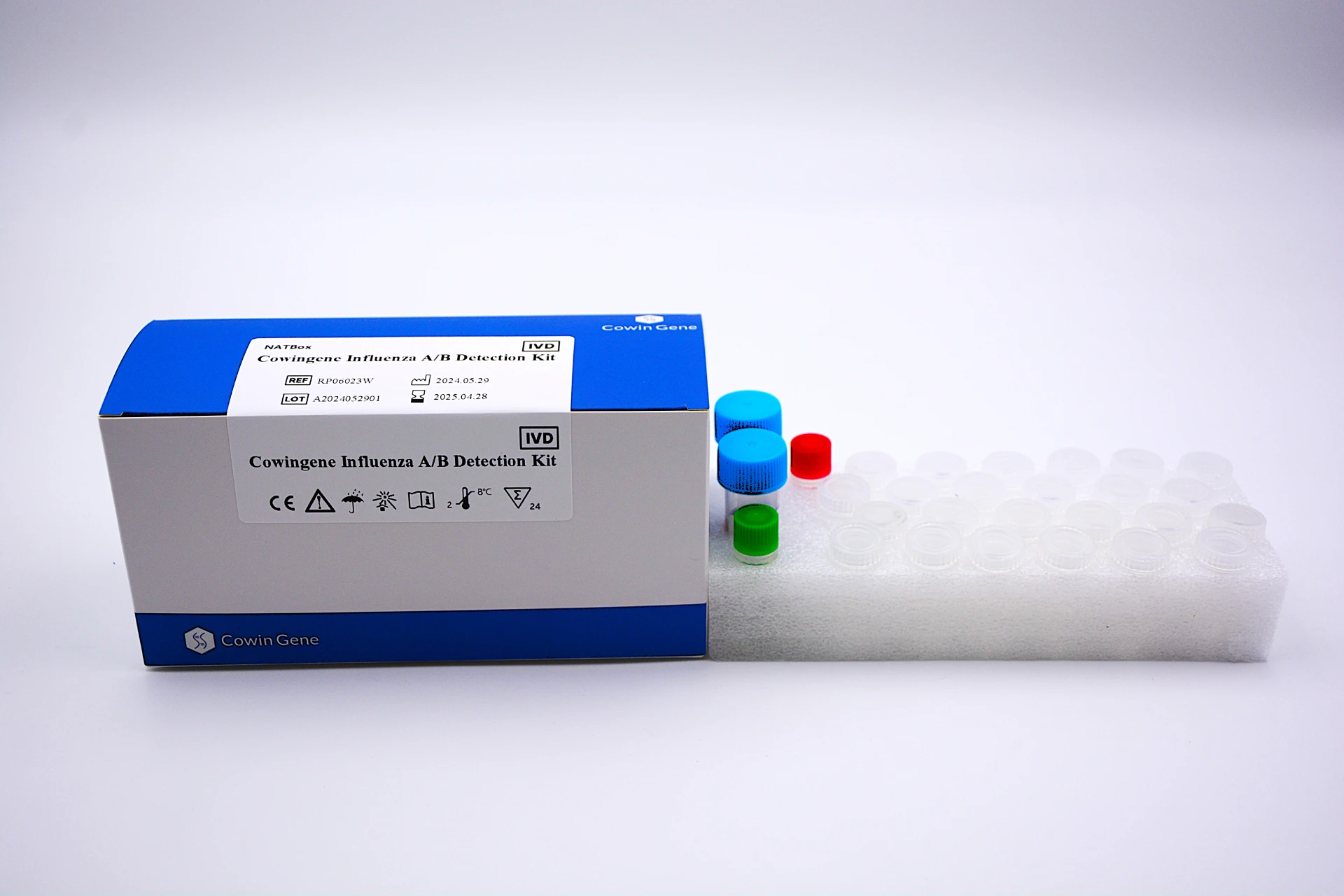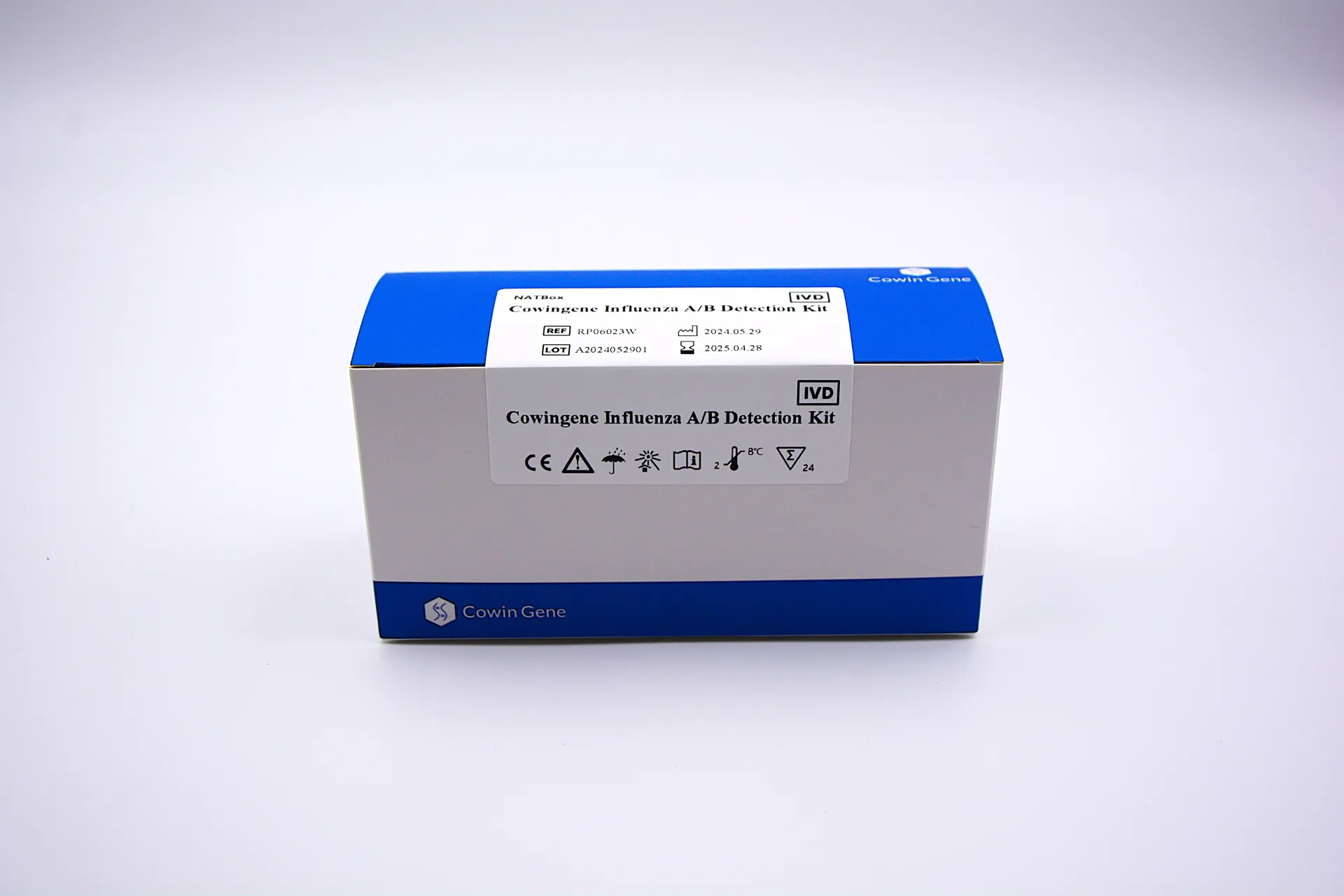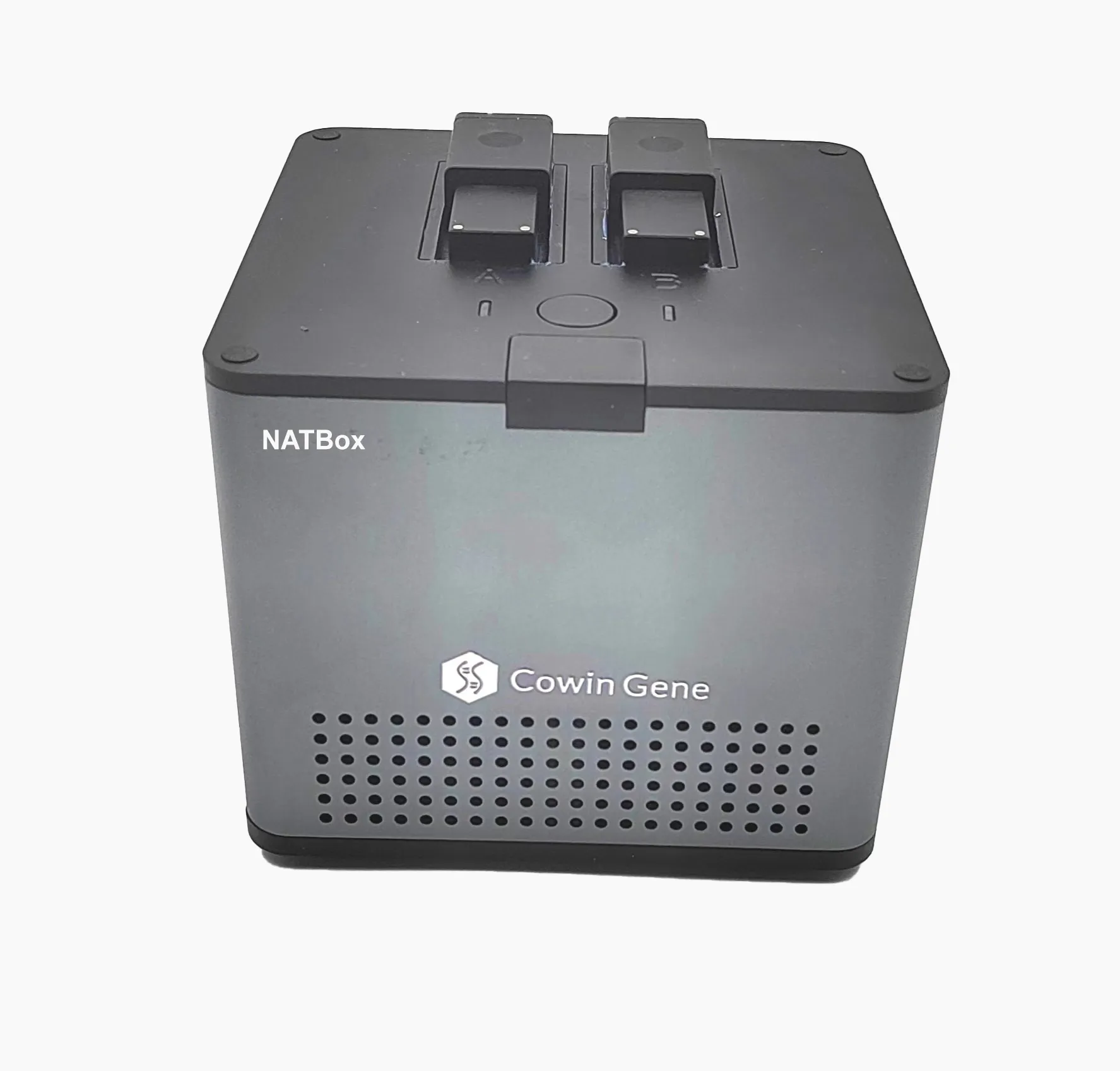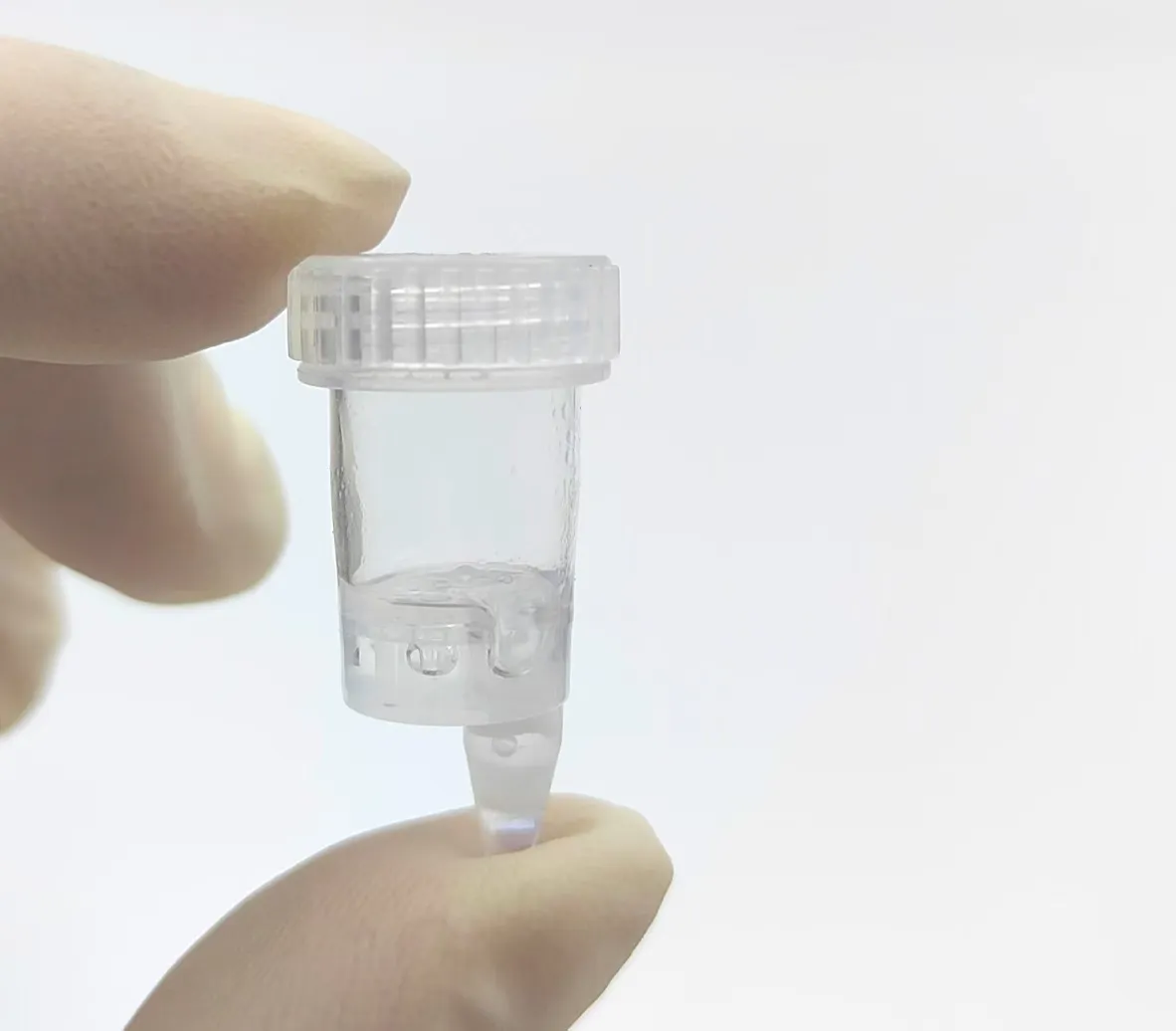أغسطس . 18, 2025 04:20 Back to list
Rapid & Accurate PCR Influenza A Testing Solutions
Navigating the Landscape of Influenza Diagnostics: The Ascent of PCR Technology
Seasonal influenza, particularly Influenza A, remains a significant global health challenge, causing considerable morbidity and mortality worldwide. Accurate and timely diagnosis is paramount for effective public health management, guiding appropriate antiviral treatment, infection control measures, and epidemiological surveillance. Historically, traditional diagnostic methods such as viral culture and rapid influenza diagnostic tests (RIDTs) have played a role, yet they often fall short in terms of sensitivity, specificity, or turnaround time. Viral culture, while highly specific, is time-consuming, taking several days to yield results. RIDTs, on the other hand, offer rapid results but frequently suffer from lower sensitivity, leading to false negatives, especially when viral load is low. This diagnostic gap has fueled the widespread adoption and continuous innovation in molecular diagnostics, with Polymerase Chain Reaction (PCR) emerging as the gold standard. The increasing prevalence of respiratory pathogens, coupled with the constant threat of novel influenza strains and pandemics, has catalyzed an unprecedented demand for highly reliable and rapid diagnostic solutions. Consequently, the market for pcr influenza a testing has witnessed robust growth, driven by its superior performance characteristics and its indispensable role in clinical decision-making and outbreak management.
Current industry trends underscore a clear shift towards integrated molecular diagnostic platforms that offer multiplexing capabilities, enabling simultaneous detection of multiple pathogens from a single sample. This evolution is vital for differential diagnosis, especially given the overlapping symptoms of various respiratory infections. Automation and miniaturization are also key drivers, aiming to reduce hands-on time, minimize human error, and increase throughput, making advanced molecular testing accessible even in resource-limited settings. Furthermore, there is a growing emphasis on point-of-care (PoC) PCR solutions, which bring the power of molecular diagnostics closer to the patient, facilitating quicker treatment decisions and reducing the risk of transmission. The reliability and precision of pcr influenza a technology have made it an indispensable tool for clinicians, epidemiologists, and public health authorities globally. As we look ahead, the continuous refinement of PCR methodologies, including real-time PCR (RT-PCR) and isothermal amplification techniques, alongside advancements in sample preparation and data interpretation, will further cement its position as the cornerstone of infectious disease diagnostics, particularly for rapidly evolving pathogens like influenza. This commitment to innovation ensures that diagnostic solutions remain ahead of emerging health threats, safeguarding public health on a global scale through precision and speed.
The Unrivaled Precision: Technical Parameters and Advantages of PCR for Influenza A
The robust analytical performance of pcr influenza a assays is rooted in their fundamental molecular principles. At its core, PCR (Polymerase Chain Reaction) is a molecular amplification technique that allows for the exponential replication of specific DNA sequences. For RNA viruses like influenza, a reverse transcription (RT) step is integrated, transforming viral RNA into complementary DNA (cDNA) before amplification. This combined process, known as RT-PCR, enables the detection of even minute quantities of viral genetic material, providing unparalleled sensitivity. Key technical parameters defining the efficacy of flu a by pcr include its Limit of Detection (LoD), which quantifies the minimum number of viral copies per milliliter that can be reliably detected, typically ranging from 10 to 100 copies/mL, significantly lower than other methods. Specificity is another critical metric, ensuring that the assay exclusively targets influenza A sequences without cross-reacting with other respiratory viruses or host nucleic acids, thereby minimizing false positives. High specificity is achieved through meticulously designed primers and probes that bind only to unique regions of the influenza A genome.
Beyond sensitivity and specificity, the speed of RT-PCR assays has been dramatically improved with real-time PCR (qPCR) technology, which allows for simultaneous amplification and detection using fluorescent probes. This eliminates post-PCR processing steps, reducing turnaround time from several hours to as little as 60-90 minutes, a crucial factor in clinical settings requiring rapid patient management. The quantitative nature of qPCR also provides a Ct (cycle threshold) value, which inversely correlates with the initial viral load, offering valuable insights into disease progression and infectivity. Furthermore, many modern influenza a by pcr kits are multiplexed, meaning they can detect multiple targets (e.g., Influenza A, Influenza B, RSV, SARS-CoV-2) in a single reaction, saving time, reagents, and sample volume, while providing a comprehensive diagnostic picture for syndromic surveillance. The ability of PCR to accurately detect influenza A early in the infection course, often before symptoms are severe or even apparent, allows for timely isolation and treatment, significantly impacting disease transmission and patient outcomes. These inherent technical advantages position PCR as the superior choice for definitive influenza A diagnosis, surpassing the limitations of conventional methods and empowering healthcare providers with actionable, precise data.
Introducing the Cowingene Influenza A/B Detection Kit (NATBox): Optimized Performance
The Cowingene Influenza A/B Detection Kit (NATBox) represents a state-of-the-art solution for the rapid and accurate molecular diagnosis of influenza. Engineered with precision, this kit leverages advanced real-time RT-PCR technology to simultaneously detect and differentiate Influenza A and Influenza B viral RNA, offering a comprehensive diagnostic tool for clinical laboratories and public health institutions. The NATBox design focuses on delivering high sensitivity and specificity, critical attributes for reliable infectious disease diagnostics. Its robust formulation ensures minimal cross-reactivity with common respiratory pathogens and human nucleic acids, thereby providing highly dependable results. Key components of the kit include optimized primer and probe sets specifically targeting conserved regions of the influenza A and B genomes, along with high-fidelity reverse transcriptase and DNA polymerase enzymes. These reagents are meticulously formulated to ensure efficient viral RNA conversion to cDNA and subsequent amplification, even from low viral load samples, reducing the likelihood of false negatives and enhancing diagnostic confidence.
The technical prowess of the Cowingene Influenza A/B Detection Kit is further evidenced by its streamlined workflow, which integrates seamlessly into existing laboratory automation systems, minimizing hands-on time and reducing the potential for human error. Each kit is manufactured under stringent quality control standards, ensuring lot-to-lot consistency and reliable performance across different batches. The kit's design also incorporates an internal control, crucial for monitoring the entire diagnostic process from nucleic acid extraction to PCR amplification, thus validating the integrity of each test result. This internal control helps to identify potential inhibition or extraction failures, safeguarding against invalid results and ensuring the reliability of negative outcomes. For laboratories seeking an efficient and accurate method for pcr influenza a and B detection, the NATBox offers a compelling solution, delivering rapid turnaround times essential for timely patient management and effective outbreak surveillance. Its commitment to quality and performance makes it an invaluable asset in the global fight against influenza.

The Precision Pathway: Detailed Workflow for Influenza A/B PCR Diagnostics
The diagnostic process using the Cowingene Influenza A/B Detection Kit (NATBox) follows a meticulously designed workflow to ensure accurate and reliable detection of influenza A and B. This process begins with sample collection, typically involving nasopharyngeal swabs, oropharyngeal swabs, or sputum, collected from suspected patients. Proper sample collection and transport are critical to maintaining viral RNA integrity. Once received in the laboratory, the samples undergo a crucial nucleic acid extraction step. This involves lysing the viral particles and host cells, followed by purification of total RNA, including viral RNA, from the clinical matrix. Automated nucleic acid extraction platforms are frequently employed to ensure high throughput, consistency, and to minimize contamination risk. The quality of the extracted RNA is paramount for subsequent amplification, and the NATBox kit is designed to perform optimally with various established extraction methods, providing flexibility for diverse laboratory setups. This foundational step is critical for the overall success of the pcr influenza a diagnostic pipeline, ensuring that target genetic material is isolated efficiently and cleanly from complex biological samples.
Following extraction, the purified RNA is then subjected to the real-time RT-PCR amplification step. This involves preparing a master mix containing the kit's proprietary reagents: reverse transcriptase enzyme, DNA polymerase, specific primers and fluorescent probes for Influenza A and B targets, and an internal control. The reverse transcriptase synthesizes cDNA from the viral RNA template, which is then amplified by the DNA polymerase through repeated cycles of denaturation, annealing, and extension. The fluorescent probes emit a signal upon binding to their specific target sequences, and this signal is detected in real-time by the PCR instrument. The cycle threshold (Ct) value, which is the cycle number at which the fluorescence signal crosses a defined threshold, indicates the initial viral load in the sample. A lower Ct value signifies a higher viral load. Rigorous quality control measures are embedded at every stage, from reagent manufacturing under ISO 13485 standards, ensuring batch-to-batch consistency, to the inclusion of positive and negative controls in each run, validating the assay's performance and preventing false results. The internal control within the NATBox kit confirms successful extraction and amplification, ensuring reliability even for negative results. This systematic and controlled process ensures that laboratories can confidently deliver precise and timely flu a by pcr diagnostic results, directly impacting patient care and public health initiatives.

Diverse Applications and Impactful Case Studies of PCR Influenza A Testing
The versatility and high performance of pcr influenza a testing extend across a multitude of critical application scenarios, making it an indispensable tool in modern healthcare and public health infrastructure. In clinical diagnostics, PCR assays are the cornerstone for confirming influenza A infections in symptomatic individuals, particularly those at high risk for complications, such as the elderly, immunocompromised patients, and young children. Rapid and accurate diagnosis guides appropriate antiviral treatment decisions, often most effective when initiated within 48 hours of symptom onset. This not only improves patient outcomes but also prevents the inappropriate prescription of antibiotics for viral infections, combating antimicrobial resistance. Furthermore, in hospital settings, timely influenza a by pcr results enable effective infection control measures, including patient isolation and cohorting, preventing nosocomial transmission and protecting vulnerable populations within healthcare facilities. The precise identification of the viral strain allows for targeted interventions and resource allocation, optimizing patient flow and reducing the burden on healthcare systems during peak flu seasons.
Beyond individual patient care, flu a by pcr plays a pivotal role in epidemiological surveillance and public health initiatives. By accurately identifying circulating influenza strains, public health agencies can monitor viral activity, detect emerging strains with pandemic potential, and inform vaccine composition recommendations for the upcoming flu season. Rapid and reliable data from widespread PCR testing allows for effective outbreak investigation and containment strategies, limiting community transmission. For instance, during the H1N1 pandemic, PCR testing was critical for identifying cases, tracking spread, and assessing the severity of the virus, enabling a coordinated global response. In research and development, PCR-based methods are fundamental for studying viral evolution, drug resistance, and vaccine effectiveness. Custom solutions involving multiplex pcr influenza a can be tailored for specific research needs, such as co-infection studies or surveillance of avian influenza in animal populations. The technology's adaptability ensures its continued relevance in addressing both established and emerging infectious disease threats, providing the foundational data necessary for informed decision-making across the entire spectrum of public health and clinical care, from point-of-care to large-scale epidemiological studies.

Strategic Selection: Manufacturer Comparison and Tailored Solutions for PCR Influenza A
Choosing the right manufacturer for pcr influenza a detection kits is a strategic decision for clinical laboratories, public health agencies, and research institutions. The market offers a variety of solutions, each with its unique strengths in terms of assay design, throughput, automation compatibility, and cost-effectiveness. Key factors to consider include the assay's validated sensitivity and specificity, particularly its Limit of Detection (LoD), which directly impacts its ability to detect early or low-viral-load infections. Turnaround time is another critical differentiator; while some systems offer rapid results within an hour, others may require several hours, influencing clinical workflows and patient management. Furthermore, the ease of use, including sample preparation requirements and the level of automation supported by the kit, plays a significant role in laboratory efficiency. Manufacturers also vary in their support for different instrument platforms, reagent stability, and regulatory approvals (e.g., CE-IVD, FDA EUA), which are crucial for compliance and broader applicability. Cowingene's NATBox kit stands out by providing a balanced profile of high performance, user-friendliness, and robust quality assurance, making it a compelling option for diverse diagnostic needs in the field of influenza a by pcr.
Cowingene prides itself on offering not just off-the-shelf products but also flexible, customized solutions to meet specific laboratory or research requirements for flu a by pcr. This can include adapting kit configurations for higher throughput systems, optimizing protocols for unique sample types, or developing multiplex assays to incorporate additional respiratory pathogens relevant to a specific region or study. For instance, a public health laboratory might require a kit optimized for large-scale epidemiological surveillance, demanding extreme cost-effectiveness and rapid processing of hundreds of samples daily. Conversely, a hospital may prioritize a rapid, high-sensitivity assay suitable for critical patient management. Cowingene's technical team collaborates closely with clients to understand their precise needs, offering bespoke development and validation services to ensure the delivered solution perfectly aligns with operational demands and scientific objectives. This consultative approach, coupled with stringent manufacturing standards and comprehensive post-sales support, positions Cowingene as a trusted partner, empowering laboratories to achieve superior diagnostic accuracy and efficiency while adapting to evolving challenges in infectious disease management, including tailored solutions for challenging sample matrices or specific variant detection.
Comparative Analysis: Key PCR Influenza A Kit Features
| Feature | Cowingene NATBox | Competitor A (General) | Competitor B (Rapid PoC) |
|---|---|---|---|
| Target Analytes | Influenza A & B (Multiplex) | Influenza A & B (Some also RSV) | Influenza A & B (Often standalone) |
| Limit of Detection (LoD) | 20-50 copies/mL | 50-100 copies/mL | 100-200 copies/mL |
| Turnaround Time (Total) | ~90 min (incl. extraction) | ~2-3 hours | ~15-30 min (PoC) |
| Automation Compatibility | High (open-platform) | Moderate to High (closed/open) | Limited (cartridge-based) |
| Internal Control | Yes (Included) | Yes (Included) | Often Integrated |
| Regulatory Approvals | CE-IVD, ISO 13485 (Mfg) | Varies (CE-IVD, FDA EUA) | Varies (FDA EUA, Local Reg.) |

Ensuring Trust and Authority: Quality, Support, and FAQ
Establishing trust and demonstrating authority are paramount in the medical diagnostics industry. Cowingene is committed to the highest standards of quality and regulatory compliance, ensuring that every batch of the Influenza A/B Detection Kit (NATBox) meets stringent performance criteria. Our manufacturing facilities adhere to ISO 13485 certification, the internationally recognized standard for medical device quality management systems. This certification guarantees that our entire production process, from raw material sourcing to final product assembly and testing, is rigorously controlled and documented, minimizing variability and maximizing product reliability. Furthermore, the NATBox kit carries the CE-IVD mark, signifying its conformity with the essential requirements of the European In Vitro Diagnostic Medical Devices Regulation (IVDR), enabling its widespread use in the European market. Our commitment to external validation and accreditation underscores our dedication to providing diagnostic solutions that healthcare professionals can implicitly trust for accurate and consistent pcr influenza a results. We regularly participate in external quality assessment programs to benchmark our product performance against industry leaders, continuously striving for excellence and ensuring our assays consistently deliver superior clinical utility in diverse settings.
Beyond product quality, Cowingene provides comprehensive customer support, understanding that seamless integration and ongoing assistance are crucial for laboratory operations. Our dedicated technical support team comprises experienced molecular biologists and application specialists ready to assist with assay setup, troubleshooting, data interpretation, and optimization. We offer flexible delivery schedules to accommodate varying logistical needs, ensuring timely supply of kits to maintain uninterrupted diagnostic services, especially during peak influenza seasons or public health emergencies. Our standard warranty covers product integrity and performance for the specified shelf life when stored and used according to the provided instructions. We stand by the quality of our kits and are committed to resolving any issues promptly and effectively. Our goal is to forge long-term partnerships with our clients, providing not just products but complete diagnostic solutions that enhance laboratory capabilities and ultimately contribute to better patient outcomes and public health surveillance using sophisticated flu a by pcr technology. This holistic approach to customer engagement and support solidifies our position as a reliable and authoritative provider in the molecular diagnostics arena, extending beyond just the delivery of a product.
Frequently Asked Questions (FAQ)
-
Q: What sample types are compatible with the Cowingene Influenza A/B Detection Kit?
A: The kit is validated for use with nasopharyngeal swabs, oropharyngeal swabs, and sputum samples. Always refer to the product insert for detailed collection and handling guidelines to ensure optimal performance of the influenza a by pcr test. -
Q: What is the typical turnaround time for results using this kit?
A: With efficient nucleic acid extraction, the total turnaround time from sample to result can be as short as 90 minutes, depending on the extraction method and the PCR instrument used. This rapid turnaround is a key advantage of the pcr influenza a method. -
Q: Does the kit include an internal control?
A: Yes, the Cowingene Influenza A/B Detection Kit includes an internal control to monitor the entire process from nucleic acid extraction to PCR amplification, ensuring the validity of both positive and negative results. This enhances the reliability of flu a by pcr diagnostics. -
Q: What are the storage requirements for the kit?
A: The kit components should be stored at -20°C in the dark. Proper storage ensures the stability and longevity of reagents, maintaining the kit's performance throughout its shelf life. Consult the product insert for specific details.
Conclusion: Advancing Global Health Through Precision Diagnostics
The persistent threat of influenza A, alongside other respiratory pathogens, underscores the critical need for advanced diagnostic capabilities. Molecular assays, particularly those based on pcr influenza a technology, have revolutionized the approach to infectious disease diagnosis, offering unparalleled sensitivity, specificity, and speed compared to conventional methods. The Cowingene Influenza A/B Detection Kit (NATBox) exemplifies this advancement, providing a robust, reliable, and user-friendly solution for the accurate detection and differentiation of influenza A and B. Its optimized design ensures high analytical performance, crucial for effective clinical management, epidemiological surveillance, and robust public health responses. By integrating seamlessly into laboratory workflows and offering rapid turnaround times, the NATBox empowers healthcare providers to make timely and informed decisions, directly impacting patient outcomes and contributing to the containment of viral spread.
As the landscape of infectious diseases continues to evolve, the demand for precise, adaptable, and trustworthy diagnostic tools will only intensify. Cowingene remains committed to innovation and excellence in molecular diagnostics, continuously refining its products and expanding its portfolio to meet the dynamic needs of the global health community. Our dedication to stringent quality control, comprehensive customer support, and the provision of tailored solutions ensures that our partners are equipped with the best possible tools to combat influenza and other respiratory threats. Investing in high-quality influenza a by pcr solutions like the Cowingene NATBox is an investment in public health resilience, enabling a more proactive and effective response to seasonal epidemics and potential pandemics, safeguarding communities worldwide through scientific precision and technological innovation.
References
- World Health Organization. (2023). Influenza (Seasonal) Fact Sheet.
- Centers for Disease Control and Prevention. (2024). FluView: A Weekly Influenza Surveillance Report.
- Metcalf, S. (2022). Molecular diagnostics for infectious diseases: Principles and practices. Academic Press.
- Poon, L. L. M., & Peiris, J. S. M. (2019). Molecular detection of influenza virus. Current Opinion in Virology, 34, 76-83.
- ISO 13485:2016 Medical devices — Quality management systems — Requirements for regulatory purposes.
Related PRODUCTS
-
Fast & Accurate Dengue PCR Test for Early Diagnosis
NewsAug.21,2025 -
Accurate Legionella Pneumophila Detection PCR Kits
NewsAug.19,2025 -
Accurate HPV Genotyping Test Kit | Home Self-Sampling
NewsAug.17,2025 -
Accurate Dengue PCR Test | Rapid RNA & RT-PCR Detection
NewsAug.15,2025 -
Advanced Respiratory Panel Lab Test for Quick Diagnosis
NewsAug.14,2025








